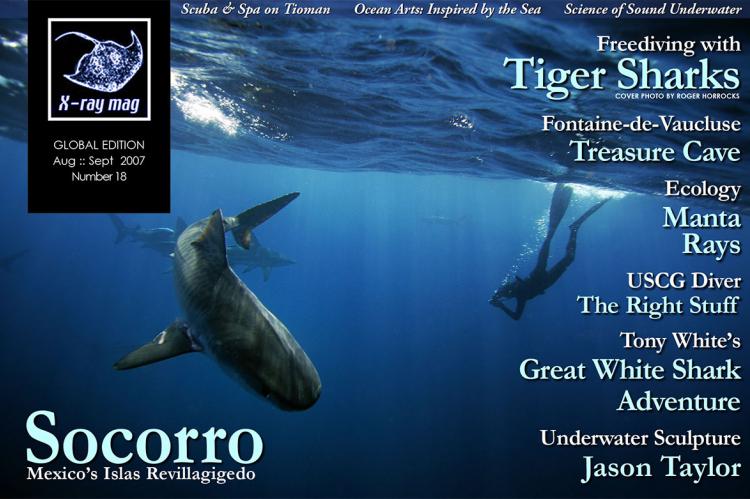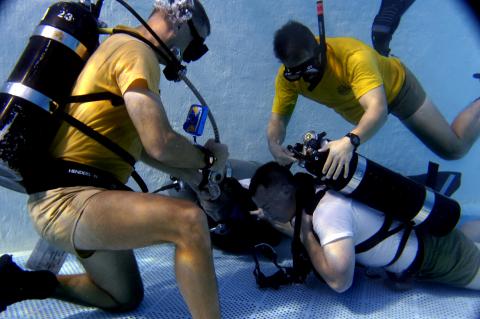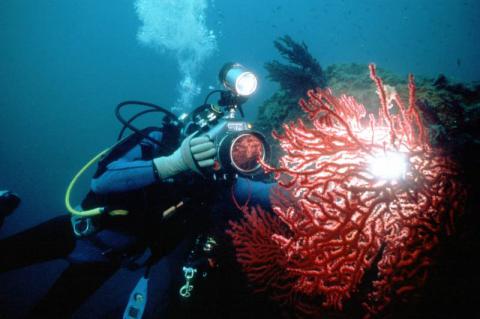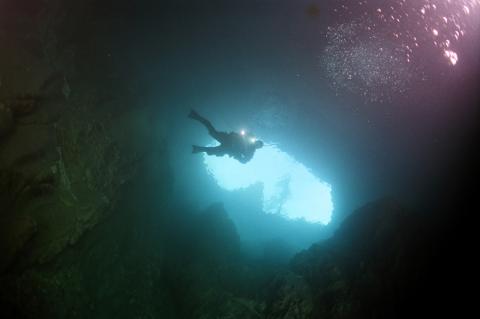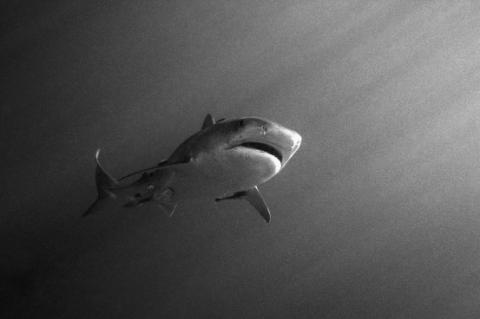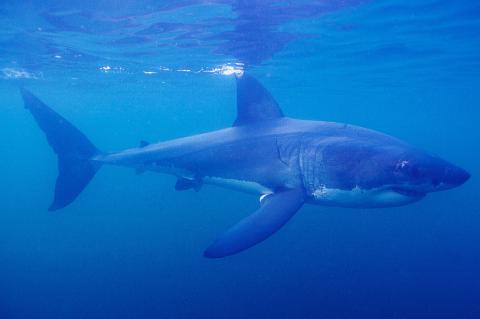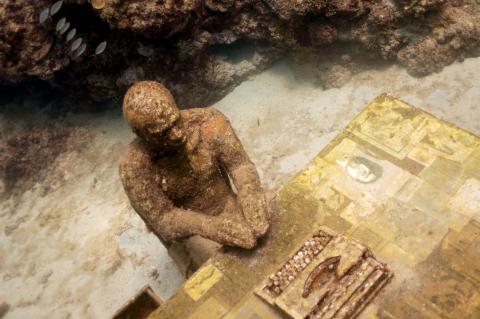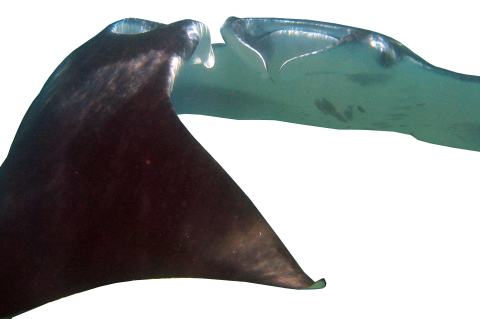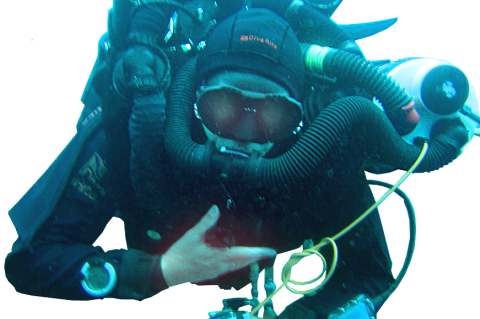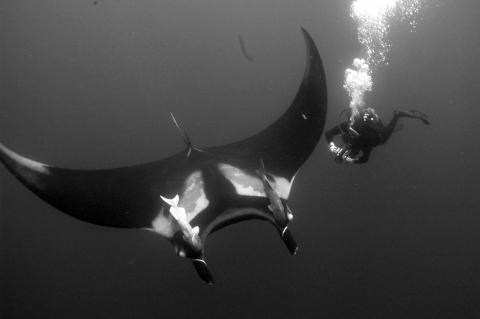X-Ray Mag #18
Soccoro Island a.k.a. islas Revillagigedos. Wolfgang dances with Tiger - free diving with Tiger sharks. Manta Ray Ecology. Great White Shark diving - with no cages Science of Sound in water. Diving solo with rebreathers - safely. Mastering Strobe Photography
Main features in this issue include:
Becoming a Coast Guard Diver
The surface of the 12-foot pool bubbles like a hot tub while instructors below signal to a group of dive students using a series of hand signals on how to inflate their vest.
“Coming here is like getting your masters degree in diving,” said Coast Guard Lt. Alan Fitzgerald, a student enrolled in the Marine Engineering Dive Officer Course at the dive center.
Flash Photography
Getting an underwater camera is really only half the solution. Without a proper light source the possibilities will be very limited. Having one or more strobes are essential, but how to chose the right unit?
First of all, the strobes—or flash units—need to be both neutrally buoyant and in balance. It is no good if one end is positively buoyant and the other negative.
Fontaine de Vaucluse - Treasure Cave
This amazing tale begins with the selection of a group of divers who were asked to participate in a technically complex dive expedition to explore one of the deepest caves in Europe. Soon enough, we, the divers, found ourselves in a frenzy of activity and planning.
Freediving with Tiger sharks
Just their name, their size, and their menacing looks can evoke feelings of terror, fear and instinctive rejection. However, if you have the privilege to be able to dive with big tiger sharks, as I have, you might fall in love with them, at least you will bond with them in a mysterious way.
“Dangerous” can be circumstances and wrong attitudes like harassing or provoking them, or else disregarding other basic safety rules such as not spear-fishing in their presence.
In search of the Great White Shark
The boat’s four occupants were spear fishing for Yellowtail. As Mark began to ask the skipper questions, one of the spear fisherman suddenly appeared to be walking on the water shouting “White, White! Get me out of the water now!”
Mark nonchalantly looked at us and said, “Well, we have found them boys. Let’s go diving!!”
Traditionally during the winter months of May to October, thousands of tourists flock to the local cage diving operators in both Gansbaai and False Bay.
Jason Taylor
Not all artificial reefs are shipwrecks or scuttled vessels, tanks or planes. Now divers can enjoy artificial reefs growing on original sculptures mounted underwater. Jason Taylor, a sculptor from England, recently finished a photo-documentation of his underwater sculpture project in Grenada. X-RAY MAG caught up with Taylor to find out how and why he did it.
Taylor studied sculpture and painting in London, but he was always fascinated with creating pieces on site in the environment. He said that he never created works for viewing inside a gallery.
Manta Ray Ecology
If you ask a group of people what is a manta, nine out of ten will think of stingrays or those large things that swim in the rivers of Florida. Even through the manta ray is the largest winged creature on the planet and has a wingspan wider than a condor, few people even know they exist. The width of a manta ray can exceed 22 feet. They are part of the shark family but hold no danger to humans as they eat only tiny zooplankton.
Noise
Aquatic animals, like their land-based relatives, can communicate in a number of ways. For example, in one form of communication, organisms can emit and detect certain organic molecules which can function as the pheromones of land based creatures. This is a sexual communication.
Electrical fields can also play a part in communication; and most aquatic creatures can also detect movement; this includes both plants and fishes (see Xray-mag.com #10 for the detection of movement by fish).
Safer Solo Diving on a rebreather
Discussions about diving are very often boring—always the same stories about numerous sharks dangerously close, strong current ripping a mask off or friendly dolphins playing during a deco stop. We heard them so many times.
Why? Because everybody knows that CCR Solo diving is the most stupid thing to do on Earth after driving a motorbike eyes closed in Bangkok or throwing sand on Mike Tyson’s face during his nap. We all know that.
Socorro
Located 386km (250 miles) southwest of the tip of Baja California and over 720km (446 miles) west of Manzanillo, the Revillagigedos are one of three Mexican island groups in the Pacific Ocean. All four islands that make up the Revillagigedos Archipelago are remote, volcanic in origin and offer some of the most unpredictable, wild diving in the world.
Topside, the islands are completely different in appearance and are home to many endemic plant and animal species. Overall, the area is recognized as a distinct terrestrial eco-region, which is part of the Neotropic ecozone (tropical and subtropical dry broadleaf forests).


